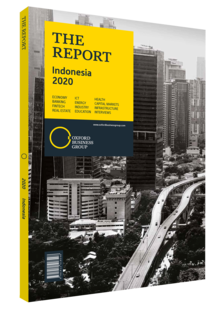Vincent Iswara, CEO, DANA: Interview

Interview: Vincent Iswara
How do you foresee the evolution of the cashless payment market in Indonesia?
VINCENT ISWARA: At the moment there are more than 100 registered and licensed peer-to-peer lending companies operating across the country. They have an important role to play in creating a financially inclusive society, which is one of President Joko Widodo’s key aims. Approximately 170m out of 260m people already have internet and data access, but 75% are either unbanked or underbanked because many people who own a bank account never actually use it. This is where financial technology can fill the gaps using smartphone applications.
Where are the opportunities for new digital wallets to penetrate a market in which first movers have already gained a significant market share?
ISWARA: I believe that there is not a first-mover advantage in this segment at the moment because digital wallets still have a relatively low penetration rate in terms of the amount of people conducting smartphone transactions. Although this sector has been developing quickly in recent years, e-payments make up less than 7% of all transactions, so there is still considerable room for growth. I believe that the more players there are operating in this segment, the easier it will be to convert people to our services. However, there is still a generation of Indonesian workers stuck in old habits and it is not easy to convince them to try digital payments. We must first focus on attracting young people and digital natives, and then let them spread the word.
What are the advantages of digital payment methods compared to cash and cards?
ISWARA: Comparing digital payments with cash, I believe that cash payment is much more inefficient. Cash has distribution costs, which amount to around Rp3.7trn ($260.9m) per year in Indonesia. Cash can also be easily damaged, forged and used for illegal payments or money laundering, because it is impossible to track. The next stage in the evolution of traditional payment was the card, which is an improvement but still has some problems. Payment cards need to be replaced every four or five years and the cost of distribution is still high. With digital payments, everything is efficient and secure. We are able to trace every single transaction, and see and control exactly what we are paying in real-time.
Does Indonesia stand out as a destination for investments in the digital economy?
ISWARA: From an investment point of view, it is clear that Indonesia is no longer lagging behind other countries. We are now at the same level in terms of innovation and technology, so it is the right moment to attract investment and open up the Indonesian market, as the government is doing. Some international investors are still cautious about investing in Indonesia due to negative experiences in the past, but the difference now is that we are determined to not only attract foreign investors, but also to retain them to ensure the country’s long-term growth.
In what ways can the country’s digital payment infrastructure be improved?
ISWARA: The first improvement that needs to made is that the digital payments segment should be standardised. Every bank or financial institution that wants to work with us needs to understand that the process takes time, as there are not enough existing models to follow. We have to adapt to different systems in order to integrate their e-payment service. There are three other factors that would boost the development of the market: educating users; boosting connectivity for facilitating interactions; and improving the energy supply in parts of the country that do not have full network coverage.
You have reached the limit of premium articles you can view for free.
Choose from the options below to purchase print or digital editions of our Reports. You can also purchase a website subscription giving you unlimited access to all of our Reports online for 12 months.
If you have already purchased this Report or have a website subscription, please login to continue.

